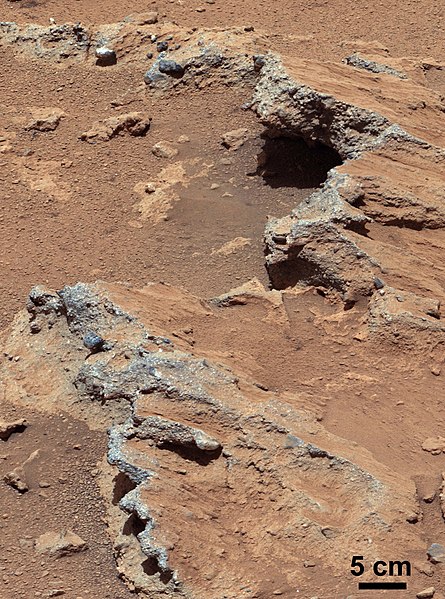ملف:PIA17062-MarsCuriosityRover-HottahRockOutcrop-20120915.jpg

حجم هذه المعاينة: 445 × 599 بكسل. الأبعاد الأخرى: 178 × 240 بكسل | 357 × 480 بكسل | 571 × 768 بكسل | 761 × 1٬024 بكسل | 1٬522 × 2٬048 بكسل | 4٬372 × 5٬883 بكسل.
الملف الأصلي (4٬372 × 5٬883 بكسل حجم الملف: 6٫85 ميجابايت، نوع MIME: image/jpeg)
تاريخ الملف
اضغط على زمن/تاريخ لرؤية الملف كما بدا في هذا الزمن.
| زمن/تاريخ | صورة مصغرة | الأبعاد | مستخدم | تعليق | |
|---|---|---|---|---|---|
| حالي | 19:56، 10 يناير 2019 |  | 4٬372 × 5٬883 (6٫85 ميجابايت) | Kesäperuna | 100% JPEG quality from full quality TIFF. |
| 23:32، 30 مايو 2013 |  | 4٬372 × 5٬883 (2٫49 ميجابايت) | Drbogdan | User created page with UploadWizard |
استخدام الملف
الصفحة التالية تستخدم هذا الملف:
الاستخدام العالمي للملف
الويكيات الأخرى التالية تستخدم هذا الملف:
- الاستخدام في ca.wikipedia.org
- الاستخدام في de.wikipedia.org
- الاستخدام في el.wikipedia.org
- الاستخدام في en.wikipedia.org
- Adirondack (Mars)
- Heat Shield Rock
- Yogi Rock
- Home Plate (Mars)
- List of rocks on Mars
- Bounce Rock
- Barnacle Bill (Martian rock)
- Pot of Gold (Mars)
- El Capitan (Mars)
- Last Chance (Mars)
- Geology of Mars
- Martian soil
- User talk:Drbogdan
- Oileán Ruaidh (Mars rock)
- Composition of Mars
- N165
- Jake Matijevic (rock)
- Bathurst Inlet (rock)
- Hottah (Mars)
- Link (Mars)
- Goulburn (Mars)
- Rocknest 3
- Shelter Island meteorite
- Block Island meteorite
- Mackinac Island meteorite
- Tintina (rock)
- User:Drbogdan/sandbox-templates-Geology-MarsRocks-MoleculesInSpace
- Template:MarsRocks
- الاستخدام في es.wikipedia.org
اعرض المزيد من الاستخدام العام لهذا الملف.

